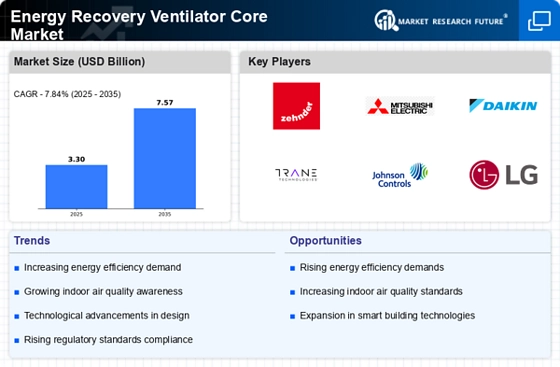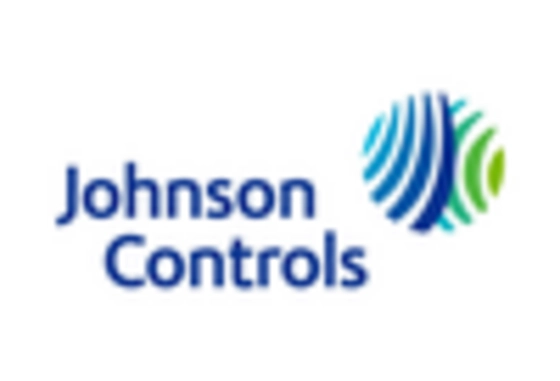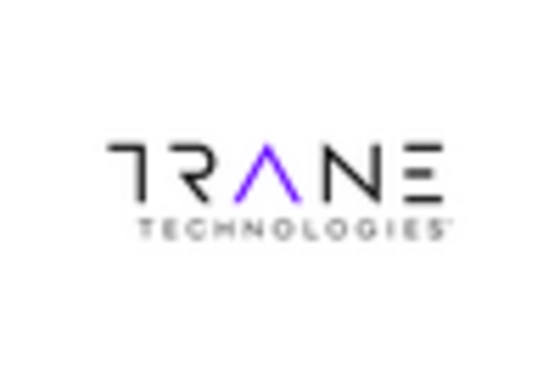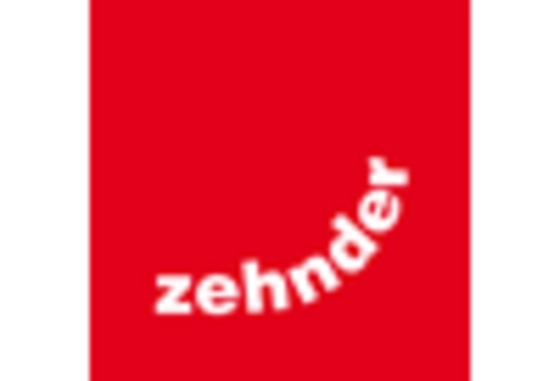The Energy Recovery Ventilator Core Market is currently characterized by a dynamic competitive landscape, driven by increasing demand for energy-efficient ventilation solutions and heightened awareness of indoor air quality. Key players such as Zehnder Group AG (Switzerland), Mitsubishi Electric Corporation (Japan), and Daikin Industries, Ltd. (Japan) are strategically positioning themselves through innovation and regional expansion. Zehnder Group AG, for instance, emphasizes sustainable design and energy efficiency, which aligns with global trends towards greener building practices. Meanwhile, Mitsubishi Electric Corporation focuses on integrating advanced technologies into their products, enhancing user experience and operational efficiency. Collectively, these strategies contribute to a competitive environment that prioritizes technological advancement and sustainability.
In terms of business tactics, companies are increasingly localizing manufacturing to reduce lead times and optimize supply chains. This approach appears to be particularly relevant in a moderately fragmented market where agility can provide a competitive edge. The collective influence of major players, including Trane Technologies plc (Ireland) and Johnson Controls International plc (Ireland), suggests a trend towards consolidation, as these companies seek to enhance their market share through strategic partnerships and acquisitions.
In August 2025, Trane Technologies plc (Ireland) announced a partnership with a leading technology firm to develop smart energy recovery ventilators that utilize AI for real-time monitoring and optimization of indoor air quality. This strategic move not only positions Trane at the forefront of technological innovation but also reflects a broader industry trend towards integrating smart technologies into HVAC solutions. The partnership is likely to enhance Trane's product offerings, making them more appealing to environmentally conscious consumers.
In September 2025, Daikin Industries, Ltd. (Japan) launched a new line of energy recovery ventilators designed specifically for residential applications, featuring enhanced filtration systems and lower energy consumption. This product launch indicates Daikin's commitment to addressing the growing consumer demand for energy-efficient home solutions. By focusing on residential markets, Daikin may effectively capture a larger share of the market, particularly as homeowners increasingly prioritize energy efficiency.
In October 2025, Johnson Controls International plc (Ireland) unveiled a new initiative aimed at promoting sustainability in building management systems, which includes energy recovery ventilators as a key component. This initiative underscores Johnson Controls' strategic focus on sustainability and positions the company as a leader in the transition towards greener building practices. The initiative is expected to resonate well with clients seeking to enhance their sustainability credentials, thereby driving demand for their products.
As of October 2025, the competitive trends in the Energy Recovery Ventilator Core Market are increasingly defined by digitalization, sustainability, and the integration of AI technologies. Strategic alliances are becoming more prevalent, as companies recognize the need to collaborate in order to innovate and meet evolving consumer demands. Looking ahead, it appears that competitive differentiation will increasingly hinge on innovation and technological advancements rather than solely on price. Companies that can effectively leverage technology and ensure supply chain reliability are likely to emerge as leaders in this evolving market.


















Leave a Comment